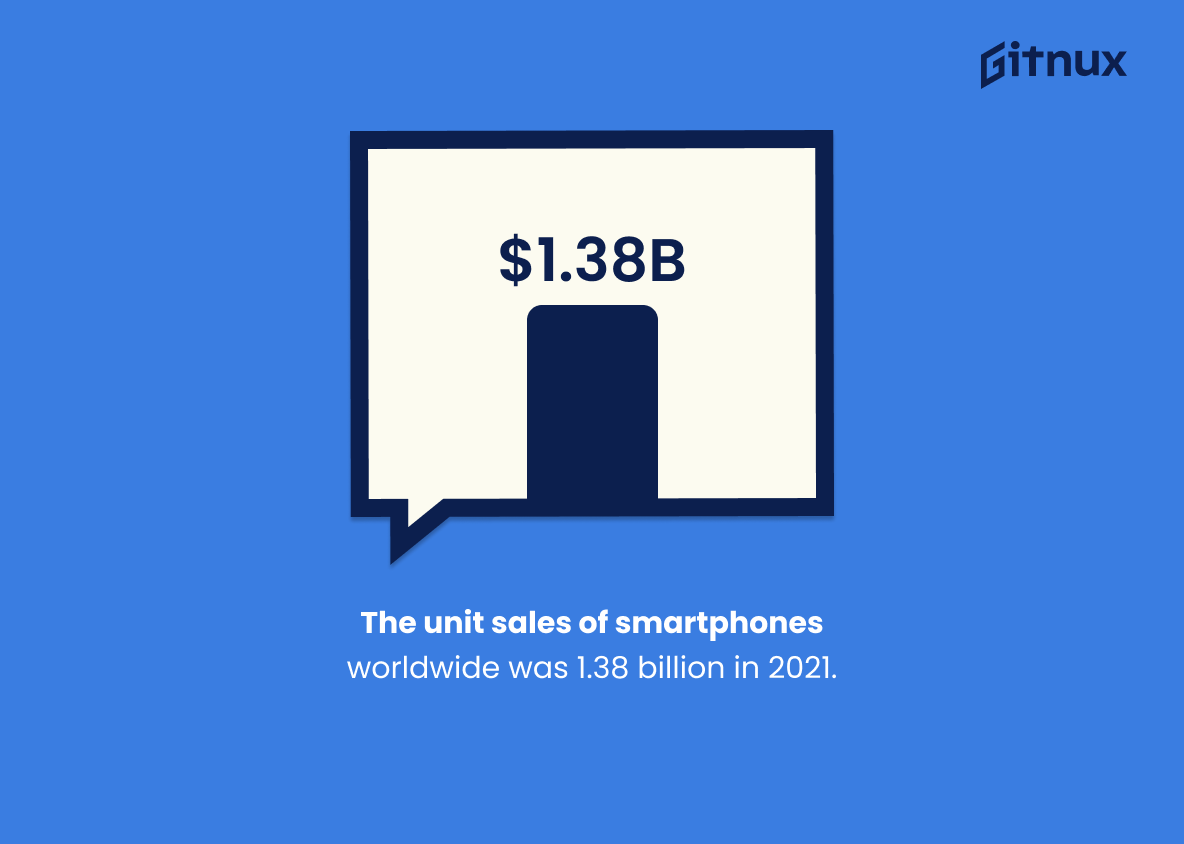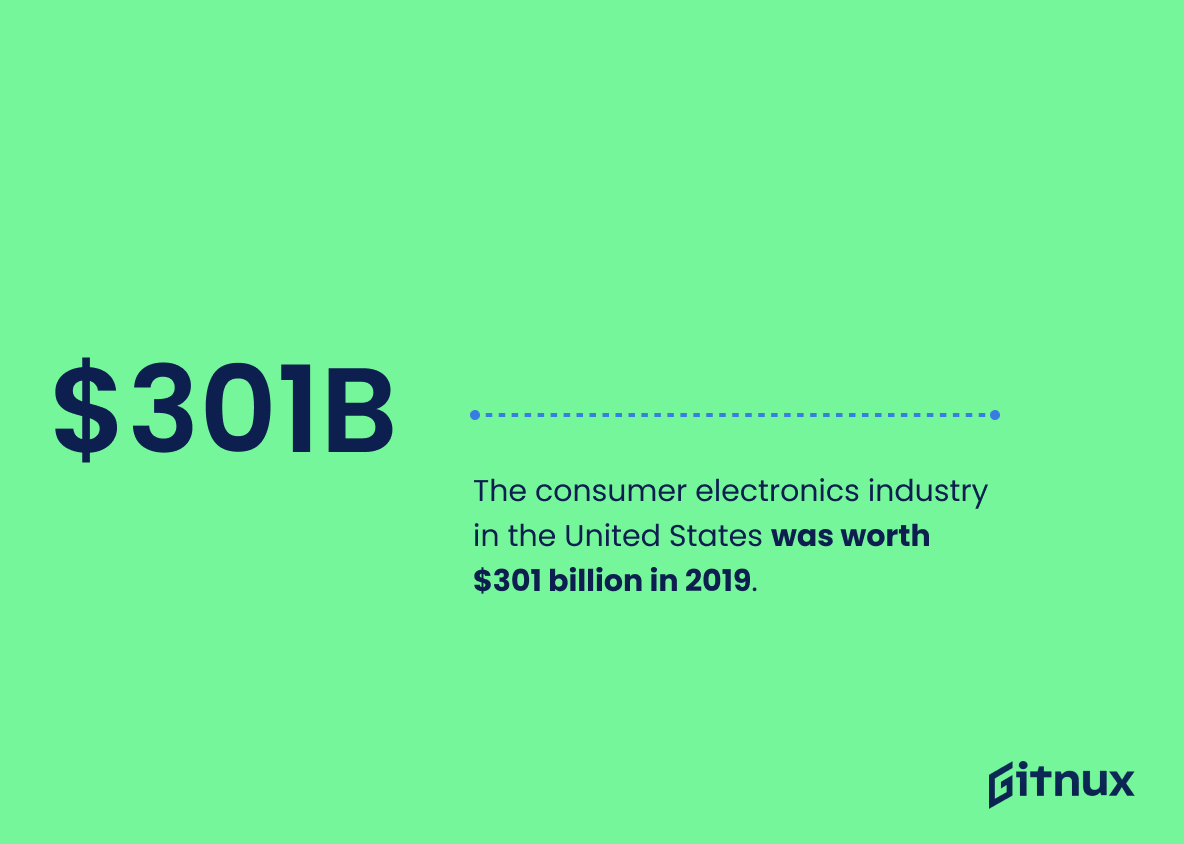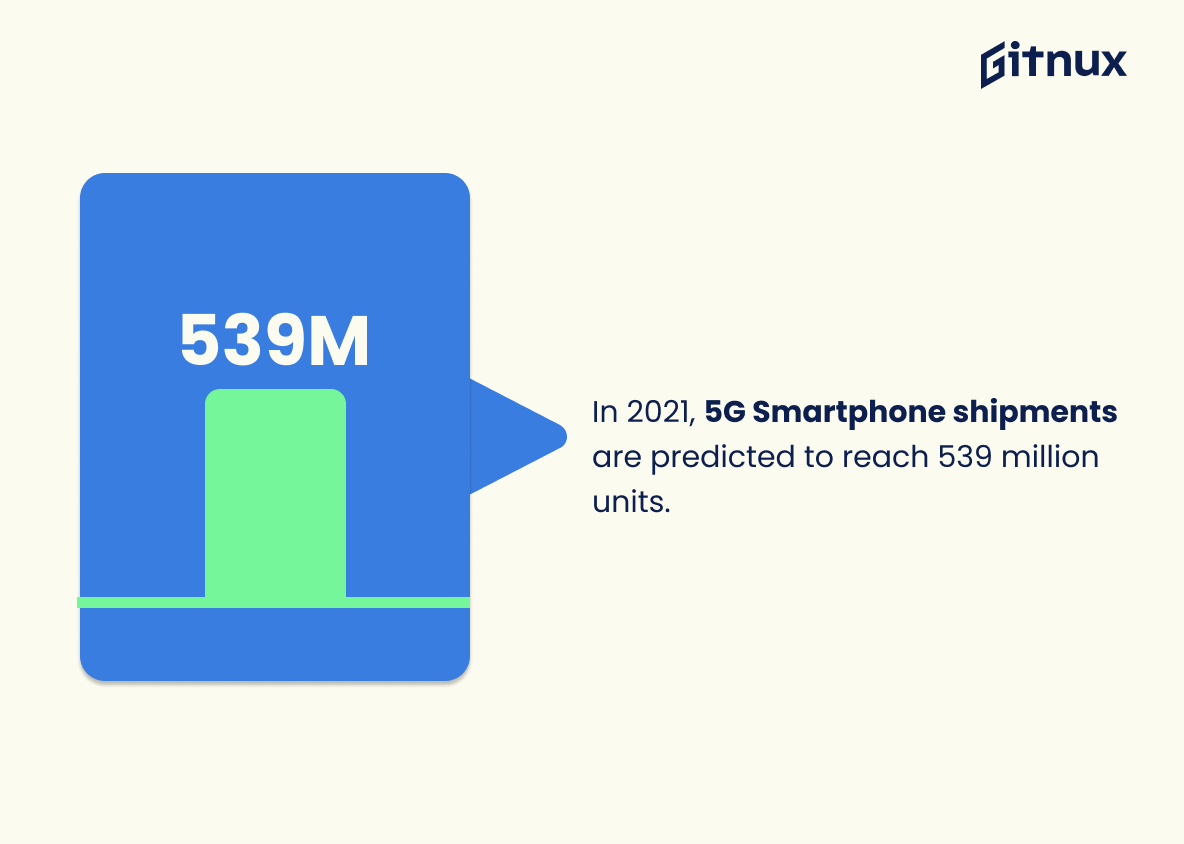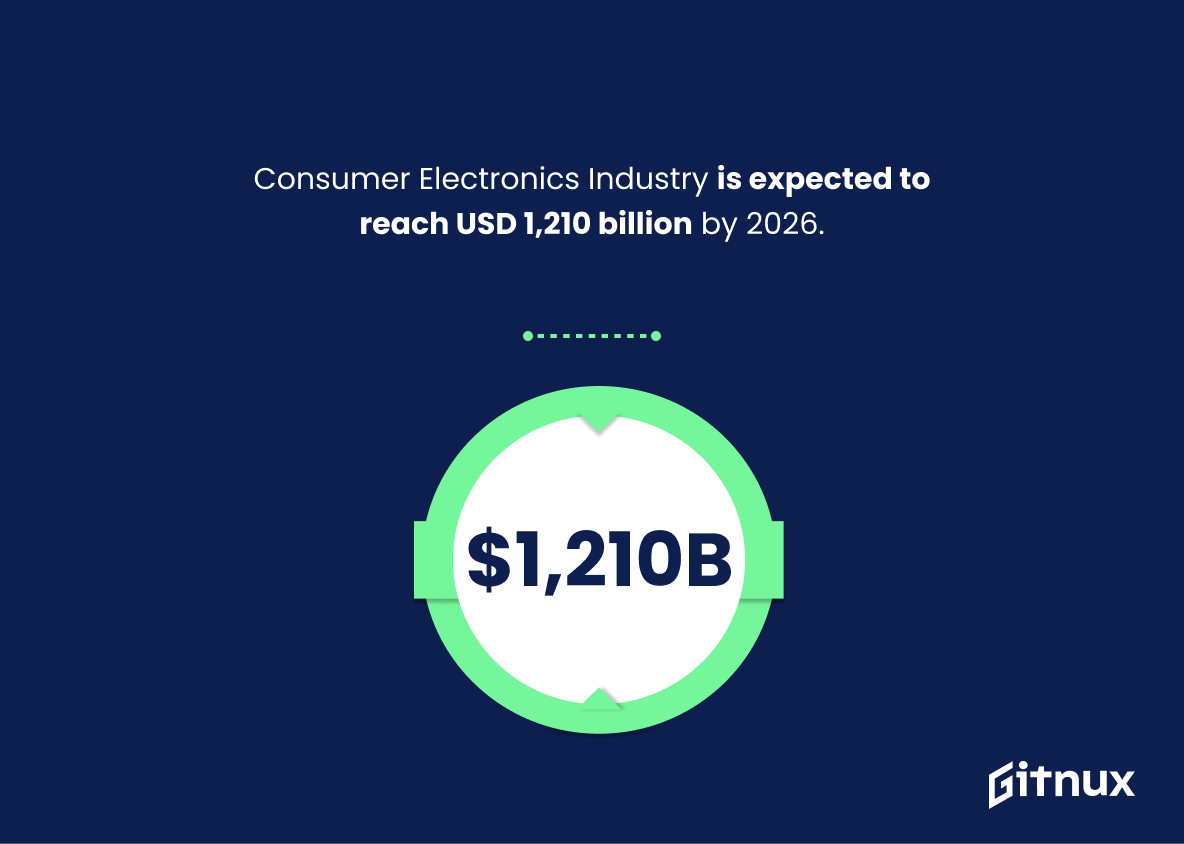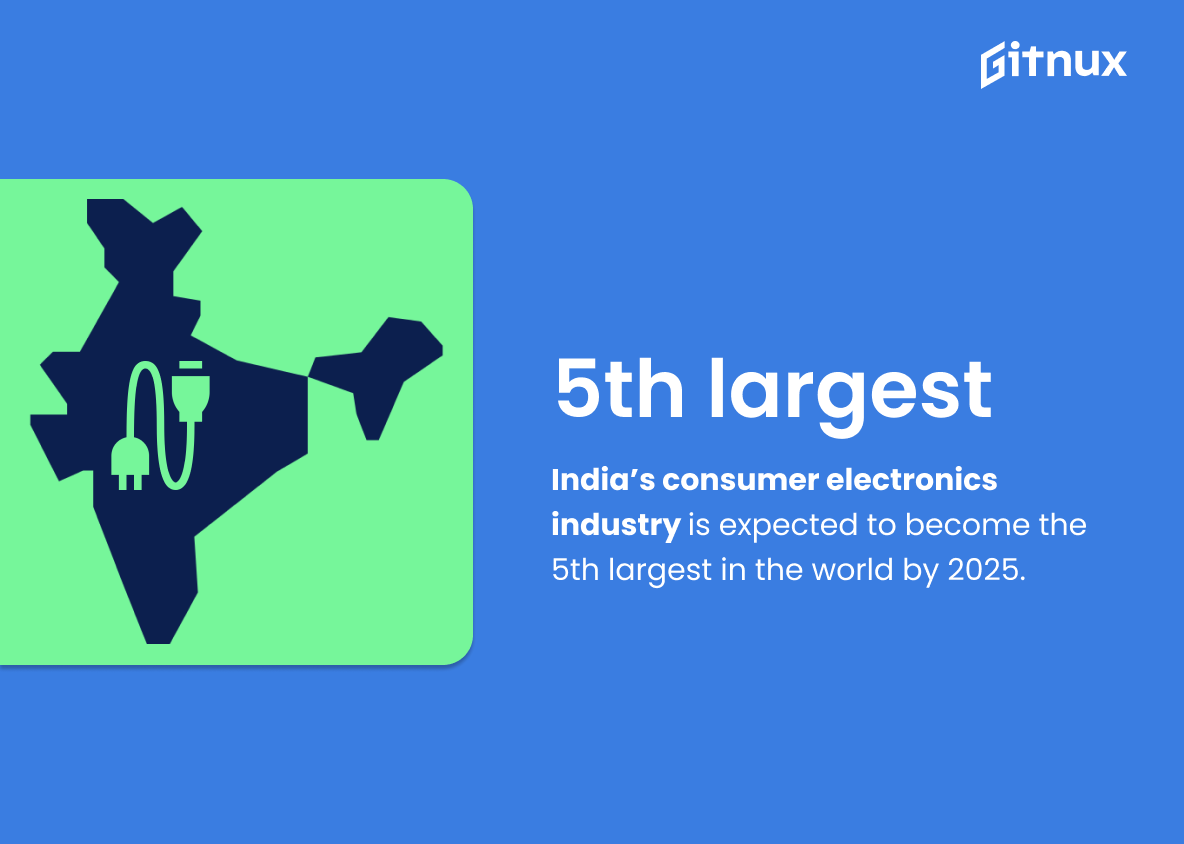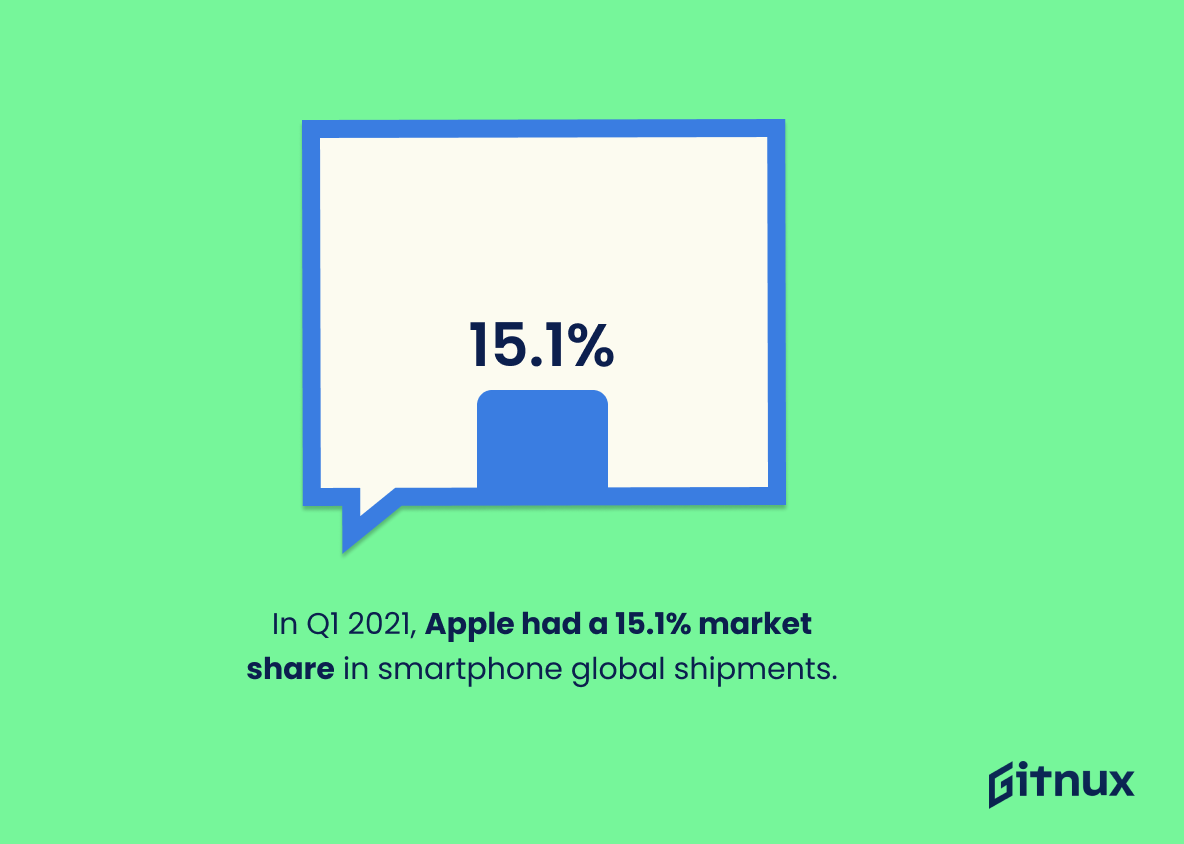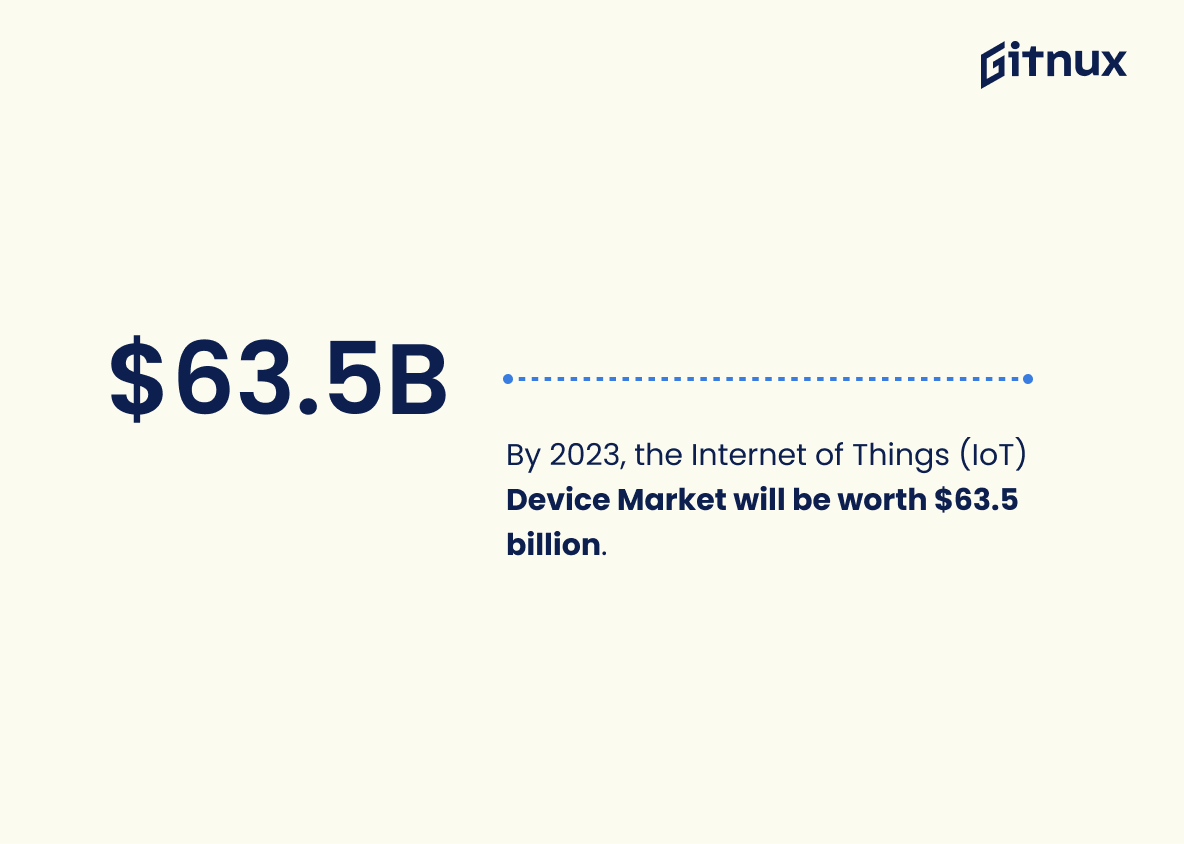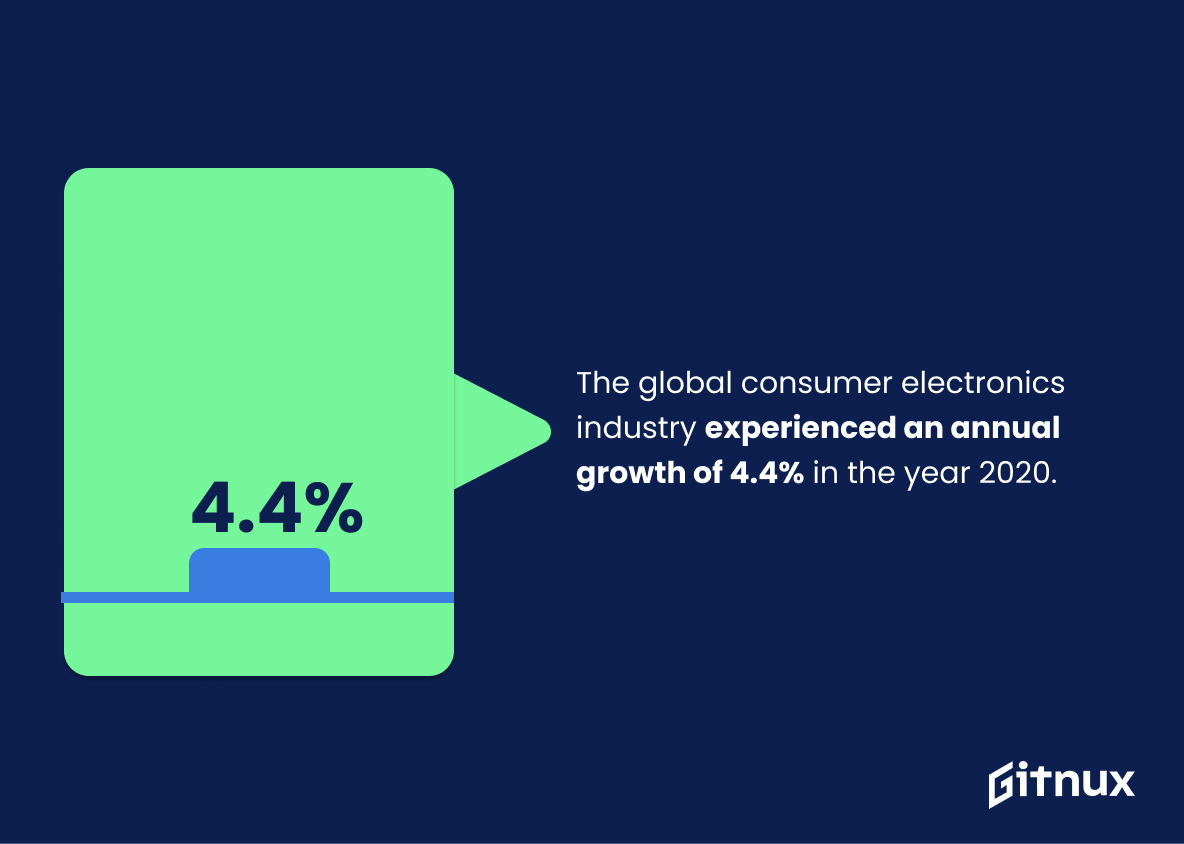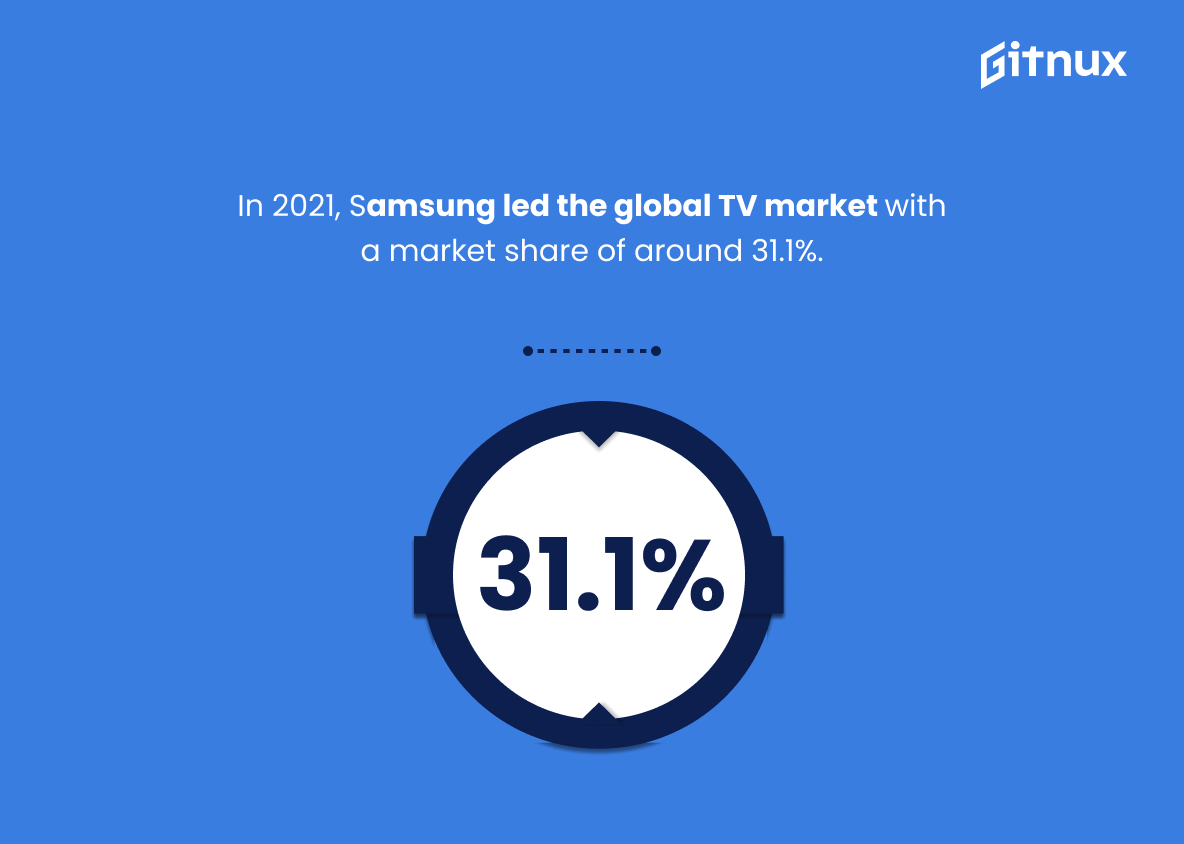In today’s evolving digital landscape, the consumer electronics industry is dynamically shaping our everyday lives on multiple levels. From smartphones to gaming consoles, wearable tech to smart home appliances, the gadgets we love and rely on are the cornerstones of this vibrant industry. They offer us increased mobility, seamless connectivity, and an improved lifestyle, making the consumer electronics industry a thriving and intriguing field to explore.
This blog dives deep into the most current and impactful statistics of the consumer electronics industry. Understand how this industry is expanding, the trends driving its growth and what we can anticipate in the future. This behind-the-scenes peek into the world of consumer electronics will equip you with insights that could reshape how you perceive our tech-driven lives.
The Latest Consumer Electronics Industry Statistics Unveiled
The global consumer electronics market size was valued at USD 1 trillion in 2019 and is expected to grow at a compound annual growth rate (CAGR) of 7% from 2020 to 2027.
In the grand narrative of the Consumer Electronics Industry, our trillion-dollar protagonist takes center stage. This colossal figure represents the value of the global consumer electronics market in 2019, an unambiguous indication of the industry’s prowess and universal demand for its innovative products.
The story becomes even more thrilling when paired with an auspicious plot twist. Our titan is on course to grow, not just at any rate, but at a compound annual growth rate (CAGR) of 7% from 2020 to 2027. The rhythm of this growth hints at the relentless pace of innovation and consumer appetite for fresh, state-of-the-art gadgets and technologies.
Imagine the impact of such formidable growth within this thriving sector. A blog post highlighting Consumer Electronics Industry Statistics wouldn’t just narrate these numbers; it would tell a story of unprecedented global expansion, fuelled by relentless progress. Using these statistics as a backdrop, we can paint a vivid picture of a captivating industry chronicle, impossible to ignore for investors, industry players, and gadget enthusiasts alike. It’s a tale of a relentless march towards the future, fueled by technological advances and consumer desires. And it’s all told through the eloquence of numbers.
The unit sales of smartphones worldwide was 1.38 billion in 2021.
Picturing the Consumer Electronics landscape without acknowledging that an astronomical figure of 1.38 billion smartphones danced off the shelves globally in 2021 is akin to painting a rainbow without the color blue. Such a staggering number carries immense significance and paints a vivid portrait of the influential role smartphones, a keystone in the consumer electronics domain, have in shaping the industry dynamics.
Furthermore, this statistical revelation serves as a potent testimony to the perpetually escalating consumer reliance on these devices, presenting a clear forecast of the roads the industry is poised to traverse. Indeed, to skim over this key fact would be to miss a pulsating beat in the electronic market’s rhythm.
The consumer electronics industry in the United States was worth $301 billion in 2019.
An engaging revelation that truly stands out is the stupendous value of the consumer electronics industry in the United States – a remarkable $301 billion in 2019. This figure becomes a pivotal point of discussion in our exploration of Consumer Electronics Industry Statistics. This colossal valuation underscores the industry’s significant contribution to the economy, its vital role in technological advancements, and the potential it holds for future growth.
Also, the magnitude of this value helps underscore the Americans’ voracious appetite for consumer electronics, from smartphones to smart homes. It definitively cements the prominence of the U.S. as a major player in the global consumer electronics scene. Ultimately, appreciating this statistic is key to understanding the sheer scale, potential, and complexities of the industry we are delving into.
In 2021, 5G Smartphone shipments are predicted to reach 539 million units.
Highlighting this forecasted surge in 5G smartphone shipments serves as a potent testament to the seismic shift occurring within the consumer electronics industry. The anticipation of 539 million units outlines a powerful narrative about the technological evolution towards more advanced mobile connectivity.
This narrative underlines not just the expected growth in 5G smartphones but a considerable transformation in user habits and preferences – a crucial pivot for industry stakeholders. Thus, in painting the landscape of the consumer electronics industry, this statistic acts as a pivotal reference point, suggesting a profound impact on product trends, manufacturing strategies, marketing initiatives, and consumer preferences.
Consumer Electronics Industry is expected to reach USD 1,210 billion by 2026.
Projecting the Consumer Electronics Industry to surge to an astonishing USD 1,210 billion by 2026 casts a vivid glimpse into the fast-paced future of this vital sector. It not only underscores the industry’s enormous growth potential but also communicates the escalating demand for technological innovations globally.
Thus, as we navigate the stunning tapestry of Consumer Electronics Industry statistics, this anticipated market valuation serves as a critical flashlight, illuminating the scale of opportunities and challenges ahead. It becomes a formative pillar for entrepreneurs, investors, and tech-enthusiasts seeking to understand, invest, and innovate amidst the fascinating landscapes of digital progression.
India’s consumer electronics industry is expected to become the 5th largest in the world by 2025.
In the exuberant serenade of global economies, the tune of India’s consumer electronics industry resonates impressively. Set to leap into the prestigious club of the top five global giants in the field by 2025, one cannot ignore the crescendo of this growth. In the context of a blog post about Consumer Electronics Industry Statistics, this upward trajectory of India spearheads a broader discourse about emerging markets and their increasing impact on the global landscape.
Notably, this statistic unlocks a myriad of discussions on factors fueling this advancement, including demographic dividends, technological accessibility, and policy frameworks. Additionally, it highlights the potential opportunities for global businesses looking to expand their consumer base, as well as the challenges inherent in navigating a market as complex and diverse as India. This forecast astutely overflows a wealth of insights, shaping both the current understanding and future projections of the global consumer electronics industry.
In Q1 2021, Apple had a 15.1% market share in smartphone global shipments.
Drawing attention towards Apple’s 15.1% market share of smartphone global shipments in Q1 2021, one can’t help but acknowledge the magnitude of the firm’s presence in the consumer electronics industry. This datapoint doesn’t just illustrate Apple’s stronghold in the technology marketscape; it’s like each percentage point paints a broader picture: a tale of brand loyalty, the successful coherence of marketing strategies, and leadership in design, innovation, and quality.
It’s not merely a static figure, but a dynamic indicator of performance, growth and competition in this volatile global industry. This share echoes loud in the grand symphony of consumer electronics industry statistics, embodying major factors influencing consumer behavior and market trends.
By 2023, the Internet of Things (IoT) Device Market will be worth $63.5 billion.
Drawing the lens of foresight upon the riveting world of the Consumer Electronics Industry, one cannot ignore the glaring significance of the projected valuation of the Internet of Things (IoT) Device Market. Anticipated to skyrocket to an astronomical $63.5 billion by 2023, this statistic paints a vivid, surging tide of investment and innovation thundering towards the industry horizon.
Undoubtedly, the weight of such a figure resonates strongly within the context of Consumer Electronics Industry statistics. With the IoT being a driving force behind the intelligence and functionality of various consumer devices – think smart homes, wearable technology, and AI-enabled gadgets – this dynamic expansion carries a pivotal inference. The IoT sphere’s growth signifies a potential reign of awe-inspiring, high-value products revolutionizing the consumer electronics landscape.
Moreover, this value goes beyond just the raw dollar amount procured – it’s the testament of an industry that’s constantly evolving, driven by a ceaseless appetite for intelligence, connectivity, and advancement. Thus, indicating undeniably, the boundless opportunities unfolding for businesses, innovators, and even consumers who are ready to ride the crest of this wave into the future of electronics. It’s worthwhile to delve into this, uncovering the vast potential the IoT market promises, as it truly underlines the catalyst role it plays in shaping the Consumer Electronics industry.
The global consumer electronics industry experienced an annual growth of 4.4% in the year 2020.
Highlighting a robust annual growth of 4.4% in the global consumer electronics industry for 2020 interweaves facts and figures into our narrative about Consumer Electronics Industry Statistics. The strength of this data point allows readers to quantify the industry’s momentum amidst an unconventional year, punctuating the industry resilience. It sets a barometer for comparison against prior years, presents relative performance, and can be a place-holder for future projections and industry analysis. This impactful statistic propels the discussion forward, opening the gateway for further exploration and understanding of the industry’s dynamics and its promising prospects.
In 2021, Samsung led the global TV market with a market share of around 31.1%.
This illuminating piece of data about Samsung leading the global TV market with a study-proven 31.1% share in 2021 indeed paints an insightful picture within the whirlwind dynamics of the Consumer Electronics Industry. It not only vindicates Samsung’s strategic position as the undisputed czar of the television vertical, thus affecting the competitive dynamics, but also underscores their pivotal role in influencing market trends and consumption patterns.
Far from being merely numbers, these statistics effectively narrate a tale of dominance, market acumen, and consumer preference, acting as key navigational aid for stakeholders in this vibrant and often volatile industry.
The smartphone segment represented the highest revenue share in the consumer electronics industry in 2020.
Diving into the fascinating waters of consumer electronics industry statistics, one gleaming jewel of data readily catches the eye. In the year 2020, the smartphone segment emerged not merely as a participating player, but as the veritable champion of revenue generation in its field. Its dominant stature offers intriguing insights for marketers and business strategists alike.
This standout performance of smartphones undeniably highlights their central role in modern life, dictating consumer preferences and shaping industry trends. Additionally, it gives impetus to manufacturers to invest in innovative technologies that would make the smartphone experience even more integral to users’ daily lives, anticipating deeper market penetration.
Moreover, understanding this statistic provides an insightful compass guiding investments, research and strategic direction, informing market players where the demand is at its zenith. It perfectly illustrates the revenue potential of aligning with consumer trends, igniting a spark of opportunity for those willing to make a plunge in the promising pool that is the smartphone market.
The home appliances market is projected to reach USD 849.4 billion by 2027, recording a CAGR of 3.8% during the forecast period.
Delving into the ocean of consumer electronics industry statistics, one fact stands out like a lighthouse on a stormy night. The projection of the home appliances market to skyrocket to a colossal USD 849.4 billion by 2027, with an impressive CAGR of 3.8% during the forecast period. This nugget of information not only sets the tone for the potential growth and opportunities in the sector, but it also paints an image of an industry that’s continuously adapting to meet consumer needs and technological advancements.
Furthermore, this statistic constructs a trajectory of sustained growth and sheds light on the increasing consumer confidence, demand, and purchasing power that are driving this industry forward like a unstoppable juggernaut.
By 2030, the spending on consumer electronics globally is projected to reach about 1.69 trillion U.S. dollars.
In deciphering the significant footprint of the Consumer Electronics Industry, the projected leap to a staggering 1.69 trillion U.S. dollars in global spending by 2030 becomes a pivotal piece of the puzzle. The sheer magnitude of this number underscores the sector’s unbridled growth and economic influence, providing a future-oriented lens through which readers can appreciate the accelerating momentum of technological advances and consumption habits.
Such a statistic doesn’t merely signify a massive increase in expenditure; it also paints a compelling narrative about the expanding reach and relevance of consumer electronics in our daily lives, suggesting exciting ventures and potential breakthroughs for companies in this dynamic industry. Consequently, it underscores the importance of understanding and keeping up with the trends to better navigate the inevitably competitive landscape.
Conclusion
In conclusion, the breadth and depth of the consumer electronics industry continue to evolve in unexpected ways, influenced by various factors such as technological advancements, consumer preference shifts, and geopolitical circumstances. These statistics only affirm the industry’s dynamism, resilience, and potential for growth.
As we navigate further into the digital age, this sector will likely keep introducing revolutionary innovations to keep pace with changing consumer needs. Therefore, professionals, stakeholders, and enthusiasts should keep an eye on these industry statistics which will continuously provide valuable insights, tailoring their strategies to meet the market demands, ensuring their foothold in this fast-paced, technology-driven industry.
References
0. – https://www.www.fortunebusinessinsights.com
1. – https://www.www.reportlinker.com
2. – https://www.www.statista.com
3. – https://www.marketsandmarkets.com
4. – https://www.www.ibef.org
5. – https://www.www.grandviewresearch.com
6. – https://www.www.mckinsey.com
7. – https://www.www.counterpointresearch.com
8. – https://www.apnews.com

